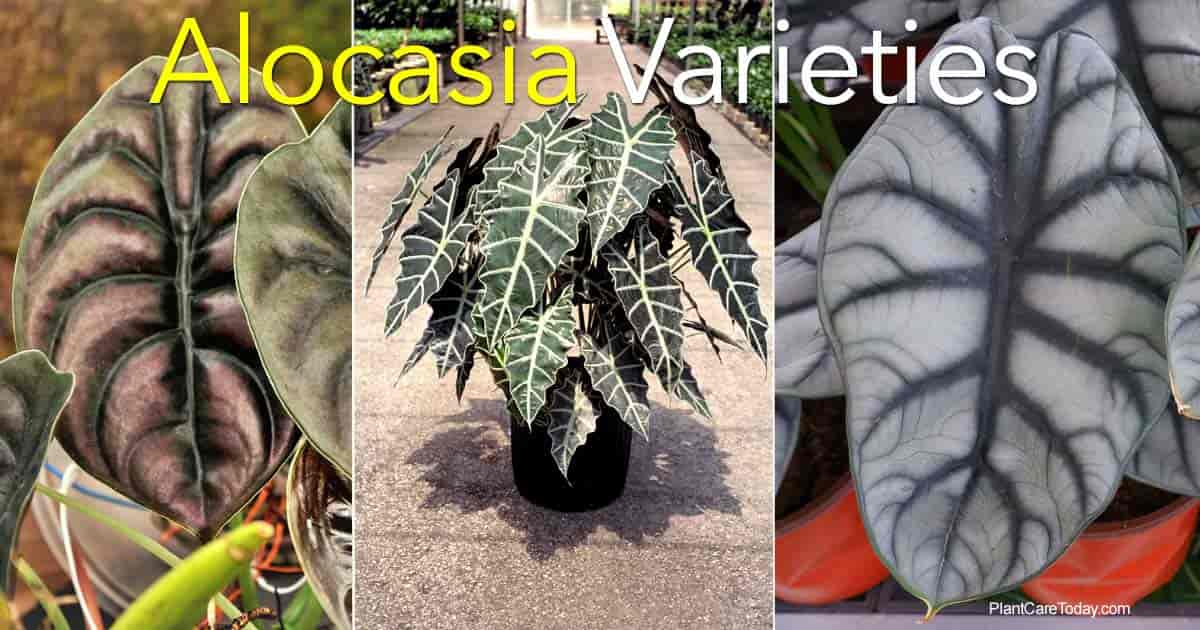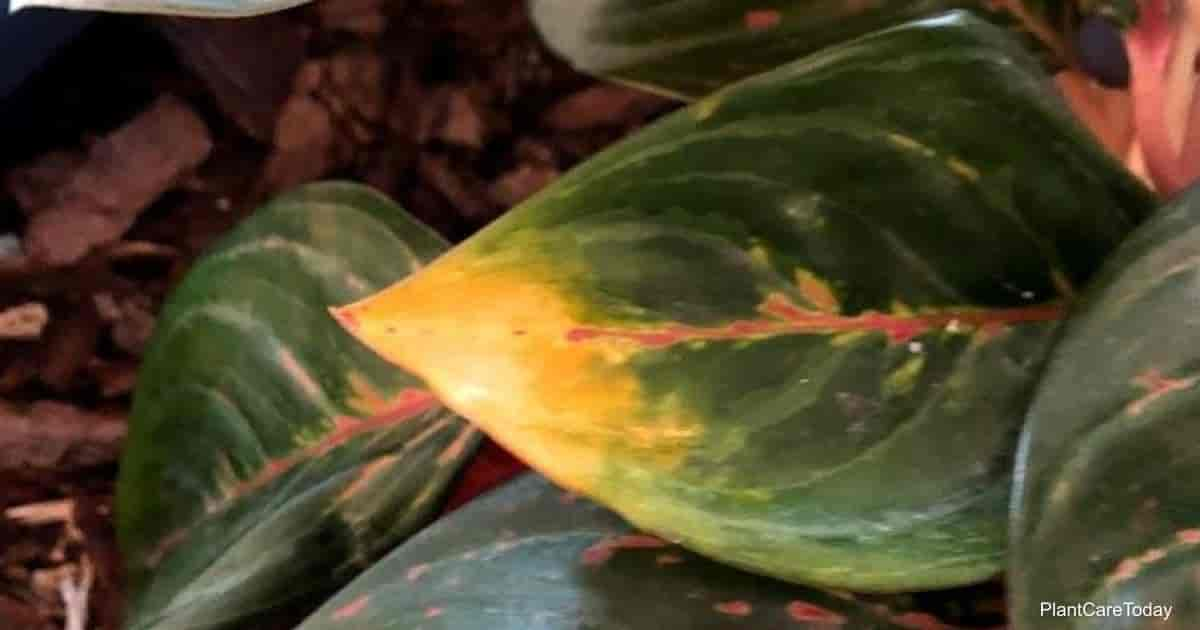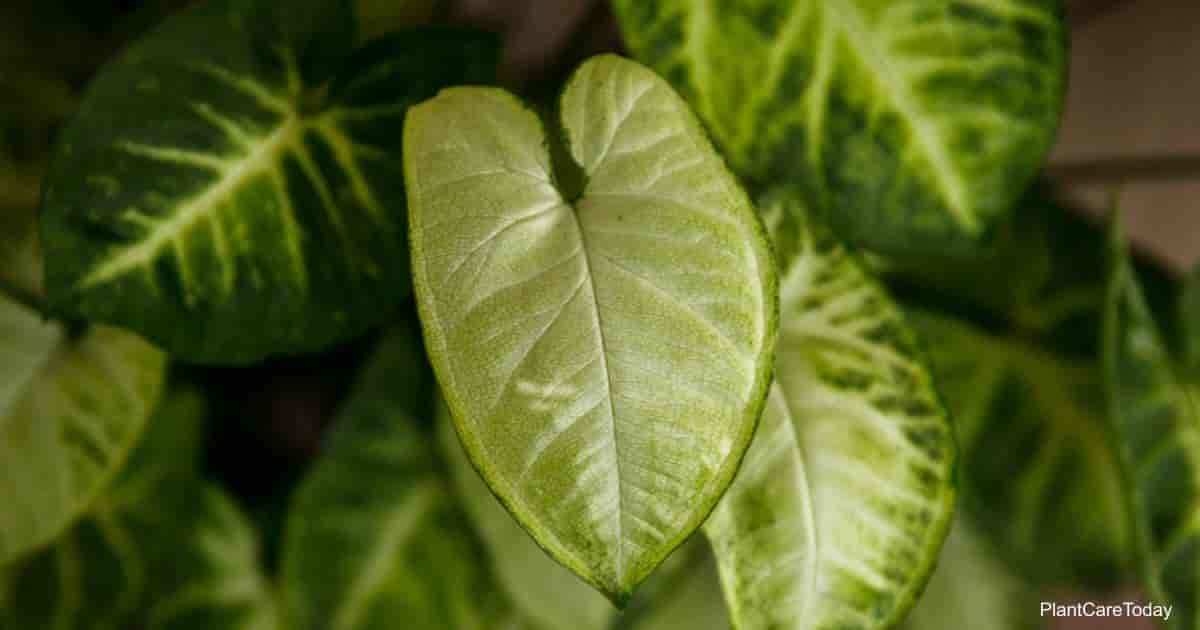Alocasia (al-lo-KAY-zee-uh), commonly called Elephant Ears, is a popular ornamental plant for home and garden settings. All-in-all, nearly 80 Alocasia species are hailing from:
- Tropical America
- Pacific Islands
- New Guinea
- Indonesia
- Malaysia
- Australia
- Africa
- Asia
PinAlocasia varieties – Cuprea (left), Amazonica (African Mask Plant), Baginda – Silver Dragon (right)
There are also a great many hybrids and crosses available of these tropical plants.
Alocasia Plants Answer to the Name “Elephant’s Ear”
All Alocasia varieties are commonly called Elephant’s Ear because of the shape of the often tremendously large leaves. However, you will also find that some of the other common names associated with this plant are interchangeable from species to species.
Alocasias are members of the Araceae (aka aroid or arum) family of plants. They are herbaceous perennials, winter hardy in USDA hardiness zones 8B through 11.
Growing Details on Alocasia Plants
In their native settings, the tubers of some Alocasia are an important food source. The leaves of some types are also edible but must be properly cooked to neutralize the toxic calcium oxalate crystals they contain. No matter what kind of Alocasia you have, keep it out of the reach of kids, pets, and livestock.
In cooler climates, Alocasia can be planted in the landscape as annuals. Otherwise, they are lovely in an above-ground planter or as container plants in areas where they will not survive the winter.
If well-controlled, these aggressively spreading plants may be planted and naturalized or used as a groundcover in areas where they will survive winter.
There are many different sizes and colors to choose from among Alocasia species. Larger plants make stunning focal points and bring a strong tropical statement to any landscape.
Smaller varieties can be planted en masse as a groundcover or as edging surrounding a patio or along a border walk.
Leaf sizes range from small narrow leaves to large leaves 3′ feet across.
Alocasia Varieties With Brief Descriptions
Below are 20+ of the most frequently sought-after species, varieties, and types of Alocasia to grow and collect.
Alocasia Amazonica
The popular Alocasia Amazonica is a cross between two Asian species – Alocasia longiloba x Alocasia sanderiana. The hybrid name comes from the nursery – Amazon Nursery – where the cross was made back in the 1950s.
- Size & Growth:This variety may grow to reach about 2′-3′ feet high with a spread of approximately two feet.
- Flowering: It is unusual for most Alocasias to bloom. The spadix is easily hidden by the leaves. If it does bloom, it produces white to yellow spadices late in the winter and/or early in the spring.
- Foliage:The plants’ large green leaves display dramatic white veining and lighter secondary veins with wavy edges.
Alocasia Frydek (Green Velvet Alocasia)
- Size & Growth:This variety may grow to reach about three feet high with a spread of approximately two feet.
- Flowering: It is unusual for most Alocasias to bloom, but if it does, it will produce white spadices late in the winter and/or early in the spring.
- Foliage:The plants’ large green leaves display dramatic white veining.
Alocasia Silver Dragon – Alocasia Baginda or African Gray Mask
- Size & Growth:This tall, slim variety can attain a height of about six feet with a spread of about eighteen inches.
- Flowering:Flowers are rare and nondescript.
- Foliage: These plants’ heart-shaped leaves are silvery green with deep green veins.
Alocasia Zebrina – Alocasia Reticulata or Alocasia Tiger, Zebra or Leopard
- Size & Growth:This plant may grow to a height and spread of about three feet.
- Flowering:If the plant blooms, it will produce white, spadix flowers in the springtime.
- Foliage:As the common names suggest, this plant has very striking foliage. The stems are black, and the leaves are zebra or tiger-striped. Occasionally, you will find a variety that displays a leopard-like splotching.
Alocasia Odora – Giant Upright Elephant Ear, Asian Taro, Night-Scented Lily
- Size & Growth:The plant may grow to be eight feet tall with a three-foot spread.
- Flowering:Unlike most other types of Alocasia, Night-Scented Lily produces beautiful, sweet-smelling flowers in the springtime.
- Foliage: These plants’ elephant ear-shaped leaves are large and very lush. They have an upward growth habit and are deep, luxuriant green.
Alocasia Black Velvet – Alocasia Reginula, Queen Alocasia, The Little Queen, Jewel Alocasia
- Size & Growth:This small, quick-growing variety may grow to a little over a foot high with a spread of about ten inches.
- Flowering:Little Queen produces small, white spadix blooms in the springtime.
-
Foliage:True to its name, Black Velvet Alocasia has gorgeous black leaves with silvery stems. The undersides of the leaves sport an attractive silver spot.
Alocasia Regal Shield
- Size & Growth:This attractive variety has a height and spread of four or five feet.
- Flowering:The plant is a hybrid cross between Alocasia odora X Alocasia reginula and could not reliably propagate from seed.
- Foliage:This attractive hybrid has deep green leaves with dark purple undersides with prominent veins.
Alocasia Dragon Scale – Dragon Elephant Ear
- Size & Growth:This variety attains a height of about five feet with a spread of approximately eighteen inches.
- Flowering:Unlike many other varieties, this plant produces interesting-looking purple spathe flowers in the springtime and the summer.
-
Foliage:The leaves of this variety are quite large and oval-shaped. They are silvery green with dark veining that gives the impression of scales. Both sides of the leaves are beautiful.
Alocasia Lauterbachiana – Baroque Sword
The plants’ more descriptive common name is Purple Sword, inspired by its purple/green, spear-shaped leaves. You may also hear it referred to as Baroque or Silver Sword or as Elephant Ear Lauterbachiana.
- Size & Growth:Baroque Sword can grow four feet high with an equal or greater spread in a conducive outdoor setting. If kept indoors as a container plant, this Alocasia will usually top out at three feet with a similar spread.
- Flowering:Silver Sword’s flowers consist of small, fingerlike spadices in shades of purple and green. Fetching as this may sound, the flowers are usually relatively small and insignificant. They appear sporadically throughout the year, and most growers simply remove them.
-
Foliage:Purple Sword’s leaves are long and lance-shaped with slightly ruffled edges. They are deep green with a purplish hue.
Alocasia Calidora – Persian Palm
- Size & Growth:Calidora has a V-shaped growth habit, resulting in a footprint of about two feet with a top spread of about six feet. The plant grows to be between five and nine feet high. [source]
- Flowering:Persian Palm produces large cream-colored spadices in green sheaths in the springtime. The sheer size of the blooms (banana-sized) makes them a great point of interest for the plant. When left to mature, they transition into attractive, pyramid-shaped clusters of red berries.
-
Foliage:This plant produces very large, green, glossy, dramatically ribbed, arrowhead-shaped leaves. Mature leaves may be four feet long and three feet wide.
Alocasia ‘Stingray’ – Stingray
- Size & Growth:Stingray grows actively and rapidly during the springtime and the summer months. These plants can grow to be five feet tall with a spread of about five feet.
- Flowering:Flowering is infrequent and insignificant.
- Foliage:True to its name, the leaves of Alocasia Stingray are stingray shaped with interesting variegation. This appearance is due to wing-like leaf growth coupled with the plants’ long, slim, purplish stem, which resembles a stingray’s tail.
Alocasia Cuprea – Alocasia Maharani or Red Secret
- Size & Growth:The plant attains a height of about 30″ inches tall with a spread of nearly 24″ inches.
- Flowering:Flowers are rare and appear when the plant is mature and well established. They are unremarkable.
- Foliage:The velvety coppery red foliage of this plant is stunning. Leaves are deep red with a black border.
Alocasia Dark Star
Dark Star is a hybrid cross of four Alocasia varieties. It has been bred to be cold tolerant and large in size.
- Size & Growth:Dark Star can attain a height of six feet and a spread of five feet.
- Flowering:Dark Star spadices are interesting in shades of yellow and white. They usually appear in the wintertime. Flowers can last for as long as a month.
- Foliage:The large, green, lance-shaped leaves are deeply veined in purple and have sturdy purple stems.
Alocasia Ivory Coast
- Size & Growth:This small, fast-growing Alocasia makes a great houseplant as it grows to a maximum of about a foot high with a spread of about eight inches.
- Flowering:Ivory Coast blooms very rarely, producing insignificant spadices which most growers remove.
- Foliage:The plants’ deep green, heart-shaped leaves are dramatically veined in silver. As the plant matures, its stems turn an attractive shade of pale pink.
Alocasia Polly – Alocasia x amazonica ‘Polly’
This plant is a hybrid cross between two or possibly three other types of Alocasia.
- Size & Growth:This relatively compact Alocasia attains a maximum height of about two feet with an equal spread. Its dramatic leaves may grow to be sixteen inches long.
- Flowering:Polly rarely blooms. When it does, it produces a typical spadix sheathed in a yellowish-green spathe.
- Foliage:Polly’s shiny, lance-shaped leaves are a dramatic shade of black with large, sharply contrasting greenish white veins. The stems are purplish black.
Alocasia Tiny Dancer
Alocasia Tiny Dancer has been called the “Most Unusual Aroid” by the International Aroid Society. Its small size and unique growth habits make the reasons for this distinction quite clear.
- Size & Growth:This small hybrid attains a maximum height and spread of about fourteen inches.
- Flowering:This plant does not flower.
- Foliage:Unlike most of its relatives, Tiny Dancer has small, bright green, cup-like, upwardly growing leaves atop long, slim, graceful green stems.
Alocasia cucullata – Chinese Taro – Hooded Dwarf
Its rhizomes are an important food source in its native environments (tropical and temperate areas of Asia). However, in other tropical and temperate regions, it is mostly considered invasive.
- Size & Growth:Hooded Dwarf Elephant Ear makes a good houseplant because it does not grow to be larger than three feet high.
- Flowering:During the plants’ growing season, it occasionally produces spadices that emit a strong and peculiar scent. The blooms are attractive to pollinators.
- Foliage:Hooded Dwarf’s green glossy leaves are heart-shaped and have very prominent veins.
Alocasia Wentii
Alocasia Wentii is a hybrid cross between Alocasia Gageana and Alocasia Odora. It is often referred to as Hardy Elephant Ear, Purple Umbrella, or New Guinea Shield.
- Size & Growth:This hardy, compact Elephant Ear makes a lovely houseplant, topping out at about two or three feet tall.
- Flowering:The flowers of Purple Umbrella are short-lived and unremarkable.
- Foliage:Wentii’s large, arrowhead-shaped leaves are deep, shiny green on top and a metallic shade of bronze/purple on the underside.
Alocasia Pink Dragon
- Size & Growth:This easy-care, fast-growing plant attains a maximum height of about 12″ inches.
- Flowering:Like many of its brethren, Pink Dragon sporadically produces nondescript flowers that are best removed.
- Foliage:The attractive, unusual leaves of this plant are a deep, glossy green with a burgundy underside and very dark, prominent veins. The overall effect is one of the dragons’ scales, hence the common name. In addition to these dramatic leaves, the plant also displays attractive pink stems.
Alocasia Portora
Portora is called by a variety of names:
- Portora Upright Elephant Ear
- Elephant Ear Portora
- Alocasia portadora
- Alocasia portodora
- Alocasia portidora
- Alocasia x portora
- Size & Growth:Fast-growing Elephant Ear Portora can attain a height of about eight feet.
- Flowering:Upright Elephant Ear produces white or cream blooms in the summertime.
- Foliage:The large, green, ruffled, arrow-shaped leaves of this plant stand atop strong, tall purple stems.
Alocasia Low Rider – dwarf version of Alocasia Portora
- Size & Growth:This sturdy, fast-growing Elephant Ear attains a maximum height and spread of two feet.
- Flowering:This seasonal bloomer produces small, insignificant white spadices sheathed in pale green spathes in the summertime.
- Foliage:The leaves of this plant are heart-shaped and glossy with ruffled edges. They stand atop very thick, sturdy stems. [source]
Alocasia Macrorrhiza
PinFlowering Alocasia macrorrhiza growing in the landscape at
Disney World, Hollywood Studios, Orlando Florida
- Size & Growth:This plant has a height and spread of nearly 10′ feet and 6′-8′ feet across.
- Flowering:Yellow-green spathe are rare and unremarkable.
- Foliage:The individual green leaves are arrow-shaped, ruffled, pointing upwards, and can reach an impressive 3′ to 6′ feet long and 2′ to 4′ feet wide.
Alocasia Sarian
- Size & Growth: This plant may reach twelve feet tall with a spread of up to ten feet in its natural setting. When kept as a container plant, it usually tops out at four feet with a six-foot spread.
- Flowering:The unscented flowers of this plant are somewhat like those of a Calla lily.
- Foliage:Sarian has large, glossy green, heart-shaped leaves with dramatic, bright white veins standing atop tall, slim, cylindrical stems.
Alocasia Chantrieri – Metallica x Sanderiana
- Size & Growth:This very unusual Alocasia can grow to be about two feet tall.
- Flowering:Information on the blooms of this rather rare variety of Alocasia is not forthcoming; however, it is probably safe to speculate that the foliage is this plants’ calling card and that the blooms (if they appear) are best removed.
- Foliage:The shiny, elongated leaves of Chantrieri are deep blue when they first emerge. They grow to an attractive shade of blue-green as they mature. The undersides of the leaves are maroon.
Other Less Available Alocasia Varieties
These varieties of Alocasia are found at more specialty growers and collectors.
- Alocasia Melo – Alocasia Rugosa
- Alocasia Brancifolia – very rare
- Alocasia Portei
- Alocasia Scalprum
- Alocasia Reversa
- Alocasia Nebula
- Alocasia Infernalis
- Alocasia Plumbea
- Alocasia Longiloba
- Alocasia Heterophylla
Credit : Gary Antosh (https://plantcaretoday.com/alocasia-varieties.html)





